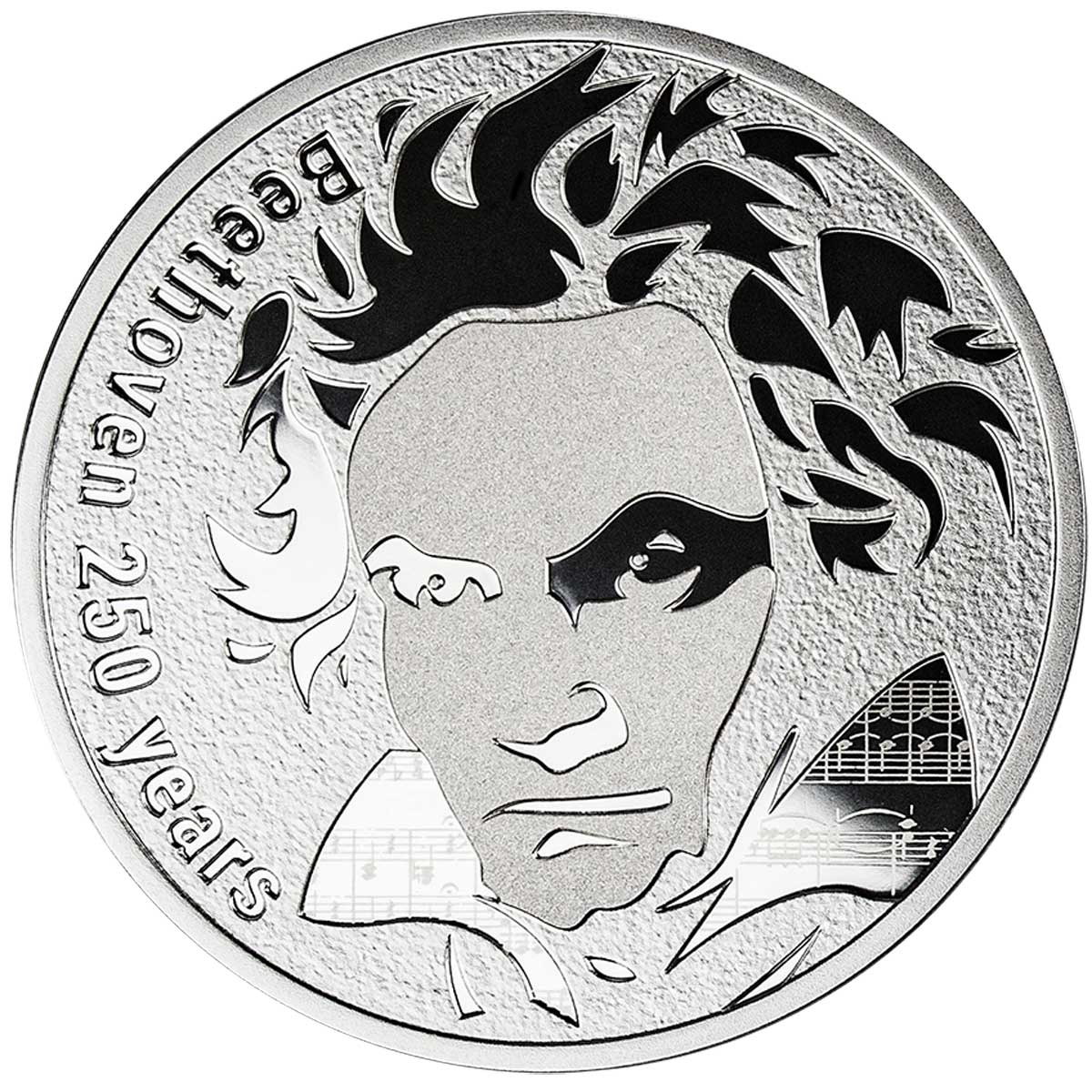One of the legendary greats in the musical world, Ludwig van Beethoven would have been celebrating his 250th birthday this year. We’ve already seen some marking of the occasion with the Helvetic Mint’s issue, but now the Mint of Poland is adding a design of their own to the mix.
Choosing the stylistic over the realistic, the reverse face of this new Cameroon issue coin depicts a bas-relief image of the talented composer – a representation of one of the most iconic images of the man. In a cool touch, the mirror proof finish ‘collars’ of his clothing have been filled with an engraved/frosted background of musical notation, and there is some heavy use of laser frosting throughout. A less classical approach than the Helvetic Mint coin, but a pleasant one, as Beethoven is instantly recognisable,
The obverse has a well realised circular pattern of piano keys, also employing a mix of laser frosting and proof finish to get the desired effect. While it’s a Cameroonian issue, there’s actually no sign of any national emblem. The central area of this obverse is filled with a QR code, which can be scanned by your smartphone, for example, to reveal extra digital content. We haven’t seen that yet.
It looks to be a nice tribute to the legendary composer. Weighing in at a standard ounce of sterling 0.925 silver, it should be pretty affordable. The mintage of 999 pieces isn’t excessive either. Available to order now.
LUDWIG VAN BEETHOVEN
Born in the German city of Bonn in 1770, Ludwig van Beethoven was a composer and pianist widely lauded as being one of the greatest classical musicians of all time. Displaying a talent from an early age, he was driven hard by his father, Johann. He published his sons first work when Ludwig was just 13 years old. Ludwig was taught by the composer and conductor Christian Gottlob Neefe, himself a talented musician who went on to help Beethoven with some of his finest works.
When 21 years of age, Beethoven moved to Vienna, where he studied composition with the outstanding Haydn. After gaining a reputation as a virtuoso pianist, he wattracted the attention of Karl Alois, Prince Lichnowsky, who had Beethoven produce his three opus 1 piano trios in 1795. The First Symphony, his debut major orchestral work, was unveiled in 1800, with his first string quartets published the following year. His body of work is generally divided into his ‘early’ (-1802), ‘middle’ (1802-1812) and ‘late’ (1812-1827) periods. His iconic Fifth Symphony, was published in 1808.
It’s incredible to believe that from around 1800 he suffered from increasing deafness. By 1814, he was completely deaf, and only then gave up performing in public. His desire to write music continued unabated, adding new, brilliant works right up to his death in 1827. It’s sad that this incredibly talented man never got to hear the works he gifted to the world himself, except in his own mind. It’s a marvel that what he produced could have been done at all. That he wrote such beautiful sounds without hearing, marks him out as that rare example of someone totally at ease and in tune with their chosen passion, and like Mozart, will be remembered as long as humanity exists, in my view.
| SPECIFICATION | |
| DENOMINATION | 250 Francs CFA (Cameroon) |
| COMPOSITION | 0.925 silver |
| WEIGHT | 28.28 grams |
| DIMENSIONS | 38.61 mm |
| FINISH | Proof |
| MODIFICATIONS | Microprinting, laser frosting |
| MINTAGE | 999 |
| BOX / C.O.A. | Yes / Yes |




Leave A Comment